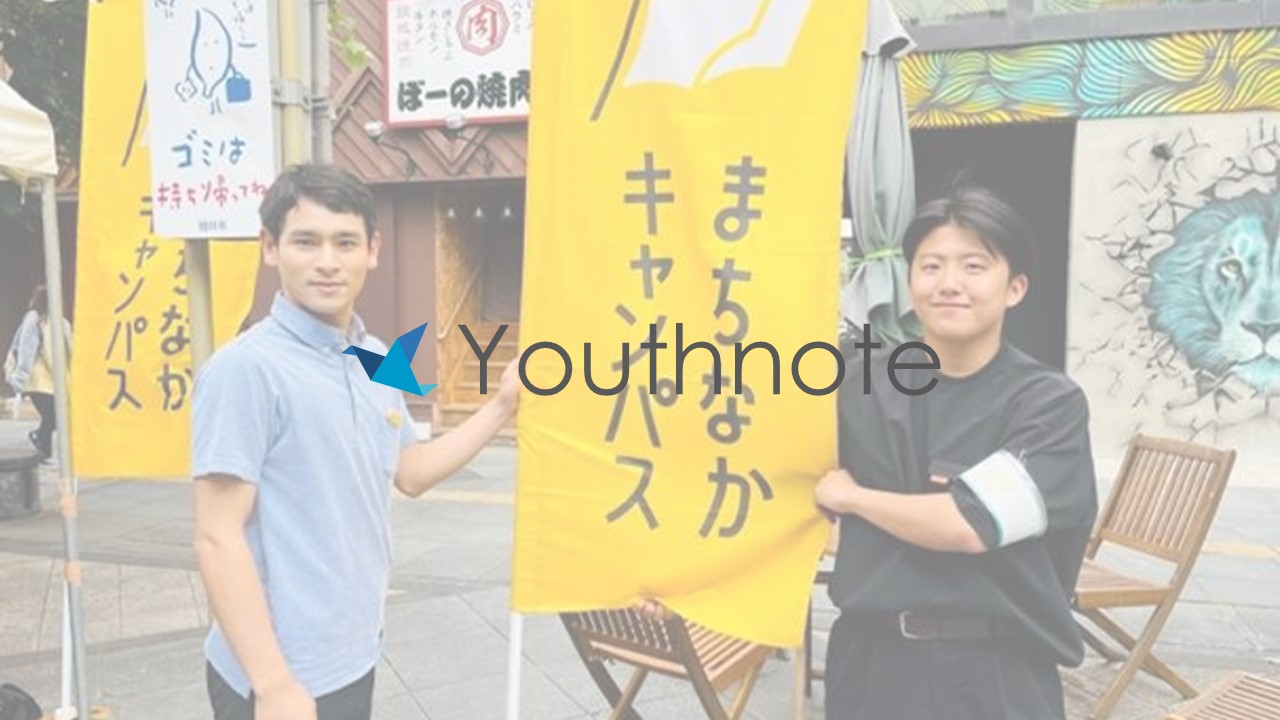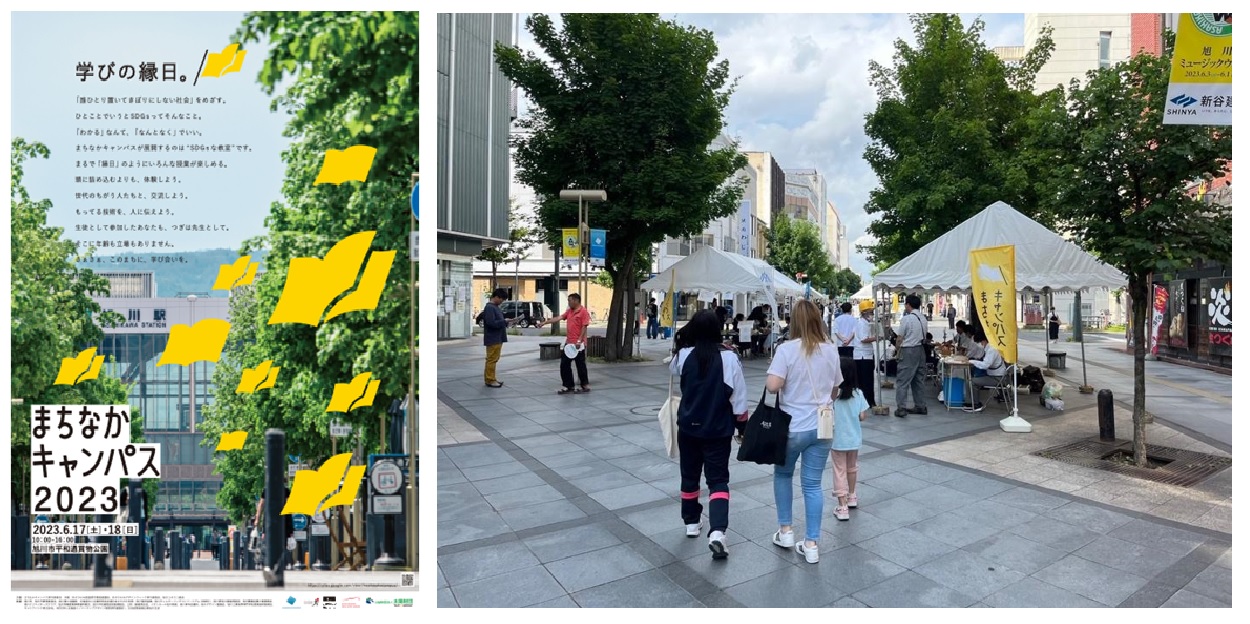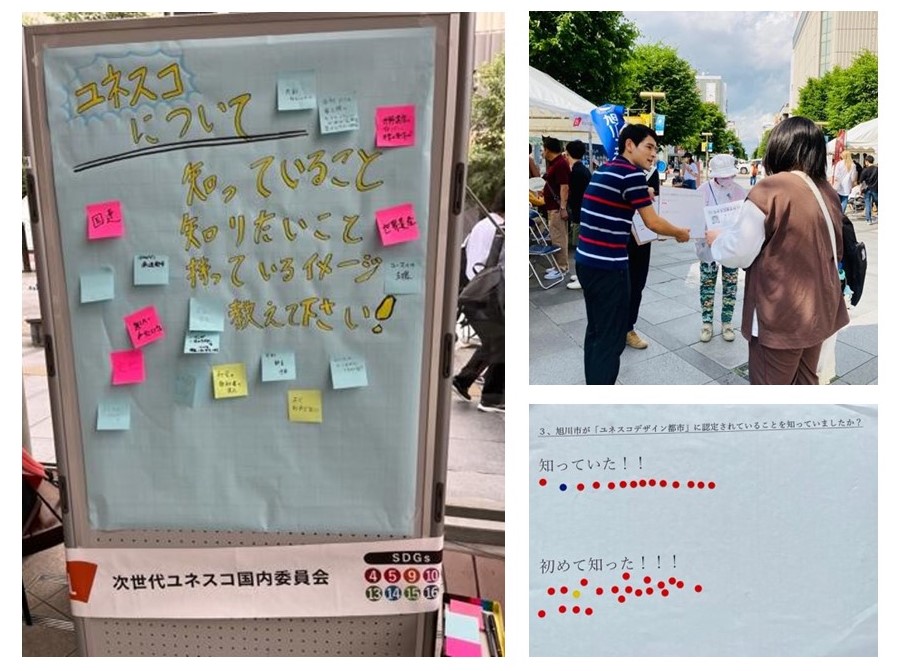
Youth Participation Plants the Seeds of Creativity: Experiencing the Machinaka Campus in Asahikawa, Hokkaido
Hello. I am Akitosh Nagasawa Patti, a member of the Youth Committee of Japanese National Commission for UNESCO (hereinafter referred to as the Youth Committee).
The UNESCO Creative Cities Network (UCCN) is a UNESCO initiative that promotes global cooperation among designated cities. The Youth Committee has been actively featuring its initiatives in Japan.
This year (2024) is sure to be memorable for UCCN in Japan, as member cities from around the globe are gathering in Asahikawa, Hokkaido, for the UCCN City of Design Sub-Network meeting!
One of Asahikawa’s standout features is the promotion of creative city projects, particularly those that actively engage youth. This article discusses the Asahikawa Design Week 2023 Machinaka Campus, an event I had the pleasure of participating in.
What is the UNESCO Creative Cities Network (UCCN)?
The UCCN is a UNESCO initiative launched in 2004 with the goal to “strengthen cooperation with and among cities that have recognized creativity as a strategic factor of sustainable development as regards economic, social, cultural and environmental aspects.” (UNESCO) Under the keyword creativity, various cities are developing initiatives to make themselves more sustainable through cross-border exchanges and mutual learning. The Youth Committee believes these initiatives not only promote the sustainable development of cultural and artistic activities at the local level but also play a crucial role in deepening international exchange as well as intercultural communication and dialogue.
The UCCN encompasses seven fields: film, design, crafts and folk art, media arts, music, gastronomy, and literature. It has expanded into a large network with 350 member cities worldwide, including 11 cities in Japan (listed below).
UCCN Member Cities in Japan:
- Design: Kobe, Nagoya, Asahikawa
- Crafts and Folk Art: Kanazawa, Tambasasayama
- Media Arts: Sapporo
- Music: Hamamatsu
- Gastronomy: Tsuruoka, Usuki
- Film: Yamagata
- Literature: Okayama
From ‘Asahikawa Furniture’ to ‘Urban Development Leveraged by Design’
Asahikawa’s furniture industry has flourished since the Meiji era (1868–1912), thanks to its geographical advantage as a major transport hub and the abundance of forest resources. To enhance its knowledge and exchange with overseas countries, various initiatives have been developed, including the Asahikawa Design Symposium, the International Design Forum Asahikawa, the International Furniture Design Competition Asahikawa (IFDA), and the Asahikawa Design Week. In 2019, the city was designated as a member of the UCCN in the design field, recognizing its efforts to utilize the “power of design” and its “connection with the world” to revitalize the cultural industries and local economy.
I also visited the Asahikawa Design Week in 2022 and participated in the symposium, where I was deeply impressed by how design serves as a catalyst for connecting people, nature, and culture. I was also struck by how design is regarded as a foundation for urban development, talent cultivation, and product creation, all driven by the city’s unique character.
“Learning Fair” at the Machinaka Campus
The Asahikawa Design Week is one of the largest among Asahikawa’s UCCN initiatives. The entire city becomes a venue for the design festival, with various events attracting visiters from all over the world. One of the most striking features is the energetic “learning fair” at Machinaka Campus, which takes place on the Heiwa-dori Kaimono-koen, a shopping street in front of the station.
The Machinaka Campus, launched in 2021, features high school and university students presenting their studies and initiatives on the theme of the SDGs, fostering deeper learning with a wide range of visitors, from children to adults. Numerous tents lined up along the shopping street, showcasing “stalls of learning” as interesting as “Great Debate! Pros vs. Cons of Entomophagy in Asahikawa,” “Philippine Smile Project,” and “Magic Disinfectant.”

Flyer/The Machinaka Campus
This year’s Machinaka Campus, the third in the series, hosted 33 organizations–including high schools, technical colleges, universities, and other groups–with 57 exhibits and 68,000 visitors.
One exhibition that stood out was by the Hokkaido College of Northern Forestry. Children were captivated by a workshop on wood-chopping and sawing and an exhibit of forestry tools, which helped them deepen their understanding of Hokkaido’s forests and the people involved in the forestry industry. This experience allowed them to engage in activities they would not typically have access to. The Hokkaido College of Northern Forestry is also collaborating with forestry colleges in Finland, a pioneering country in forestry. This exchange helped children learn about the importance of forestry, which is crucial to the production of Asahikawa furniture, with a sense of pride in their studies and awareness of global connections.

The exhibition of the Hokkaido College of Northern Forestry
Youth’s Active Role in Planning and Management
The Machinaka Campus attracted 68,000 visitors, equivalent to approximately 20% of Asahikawa’s population. While the Machinaka Campus Executive Committee oversees the event, the Machinaka Campus Student Executive Committee, composed of students from the local technical college, university, and high schools, takes responsibility for coordinating with the exhibiting schools and handling publicity.
I had the opportunity to speak with Mr. Taichi Shimada, Chairperson of the student committee (2023) and a fifth-year student at the Asahikawa National College of Technology.
Q: How did you get involved with the Machinaka Campus Student Executive Committee?
A: We were invited by the chairperson of the Machinaka Campus Executive Committee, Professor Ryoju Hamada from the National Institute of Technology, Asahikawa College to help prepare and run the Machinaka Campus 2022. We applied for the Good Design New Hope Award 2022 with the concept of “connected learning” and won an award for “designing a mechanism”! As student chairperson, I am working hard to create a more advanced version of the Machinaka Campus by utilizing the network we built through the Good Design Award.
Q: What rewards have you found in being part of the student executive committee?
A: It is extremely rewarding to experience event management firsthand, especially one that attracts over 60,000 visitors. Managing an event requires extensive preparation—coordinating with exhibitors, finalizing day-of arrangements, running publicity activities on social media, and leading the 25-member committee while balancing with my own studies. The behind-the-scenes work has given me confidence, and I’ve expanded my network by meeting people I wouldn’t have encountered in my regular student life.
Q: What does it mean to you that Asahikawa is a UNESCO City of Design?
A: As a resident of Asahikawa, I am incredibly proud of our city’s designation as a UCCN member. This recognition has boosted enthusiasm for events like the Machinaka Campus and created more opportunities for students like me to be involved. The student organizing committee members worked tirelessly, energizing the venue throughout the event. Afterward, they gathered to reflect and celebrate, sharing smiles and a sense of accomplishment.

With Mr.Shimada
Youth Committee of Japanese National Commission for UNESCO at the Machinaka Campus
The Youth Committee also participated in the Machinaka Campus, aiming to promote our activities and engage in dialogue with visitors about UCCN and UNESCO-related activities. We displayed posters about our work, conducted an image survey on UNESCO, and assessed public awareness of UCCN.

While many of the visitors who responded to the survey indicated that they had heard of the term or name UNESCO, most had never heard of UCCN. When asked if they knew Asahikawa was designated as a UNESCO City of Design, approximately half the respondents said they had heard of it, while the other half said that they were learning of it for the first time.
The Youth Committee has been discussing the low level of awareness regarding UNESCO’s activities and UCCN for some time. However, this event made us acutely aware of the current situation and reinforced the importance of actively communicating the significance of these efforts. Through dialogue with visitors, I got the impression that many perceive UNESCO-related activities as large-scale global efforts that feel distant from their everyday lives.
On the other hand, many people mentioned that they learned Asahikawa is a city of design city through the Asahikawa Design Week and Machinaka Campus. We felt that the continued implementation of these activities has played a key role in raising awareness and further strengthening engagement with the community.
Machinaka Campus and Creativity
“Currently, high school and university students are learning a lot about SDGs in school, but opportunities to share that knowledge with the outside world are limited. Is it possible to create a space where high school and university students can go beyond the boundaries of their schools to share their learning, especially a space where children can absorb something from their initiatives, fostering mutual learning?” This is how student chairman, Mr. Hamada of the student committee expresses the vision behind the concept of Machinaka Campus.
Children and young people possess flexible and limitless imagination and creativity. Through the sharing, communication, and discussion of their free ideas as “seeds of creativity,” these ideas evolve into new values that can be applied to product creation, talent cultivation, and urban development. This is an important perspective that urban creative activities should embrace, and through this participation, I strongly felt that the Machinaka Campus could be a place that sparks such initiatives.
Furthermore, the Machinaka Campus is increasingly being used as a platform for presenting inquiry-based activities, a focus of high schools nationwide in recent years. This could serve as a meaningful initiative that demonstrates the potential collaboration between inquiry-based activities and creative city projects. When I spoke with high school and university students who were exhibiting at this event, many mentioned the attractions of the Machinaka Campus as a place for “opportunities to present their own initiatives,” “learning across schools and generations,” and “building connections with society.” I strongly believe that when many citizens, especially young people, have the experience of feeling “I was able to do this because this city is a member of the UCCN,” it helps cultivate civic pride in their city. This, in turn, contributes to the recognition of the significance and value of UCCN and UNESCO activities.
I am very pleased to have built a network with the students of the student committee, who are actively involved in UCCN activities. Going forward, as part of the Youth Committee, I hope to build connections between youth involved in UCCN activities across the country and create systems where youth voices in these initiatives.
The Machinaka Campus 2024 event is scheduled to take place from Saturday, June 22, to Sunday, June 23, on Heiwa-dori Kaimono-koen street in Asahikawa. As a major event in the commemorative year of the UCCN City of Design Sub-Network meeting, the student executive committee has already been established, and preparations are progressing smoothly. Why don’t you come and experience the “learning festival” firsthand at the event?
*This is an English translation of an article that was originally written and published in Japanese on 12 April 2024. (https://unesco-sdgs.mext.go.jp/column/youthnote-20240412)
DATA
| Event Name | Asahikawa Design Week 2023 Machinaka Campus |
|---|---|
| Date | 17,18 June 2023 (Sat-Sun) |
| Venue | Heiwa-dori Kaimono-koen, Asahikawa, Hokkaido |
| Author | Youth Committee of Japanese National Commission for UNESCO (as of June 2023) Akitosh Nagasawa Patti |
This is an English translation of an article that was originally written and published in Japanese on 12 April 2024. (https://unesco-sdgs.mext.go.jp/column/youthnote-20240412)
|
